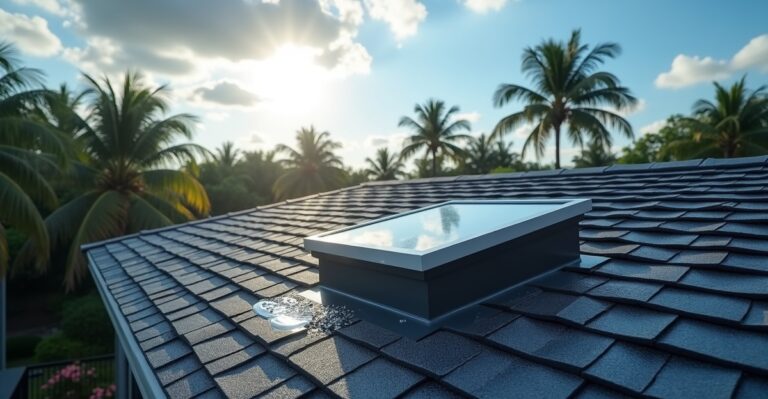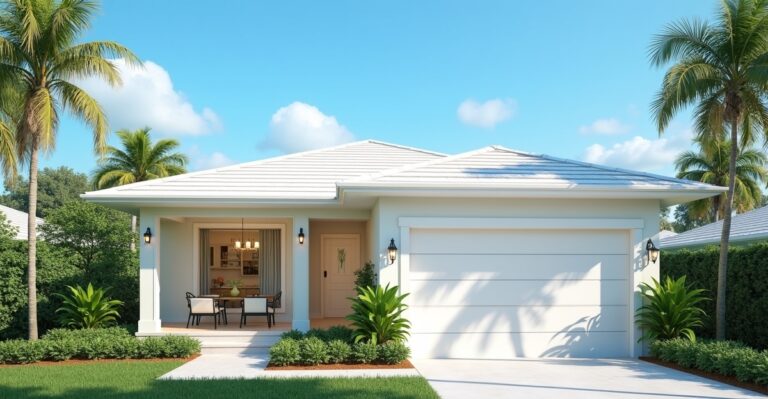When Is the Best Time to Replace a Roof in Florida?
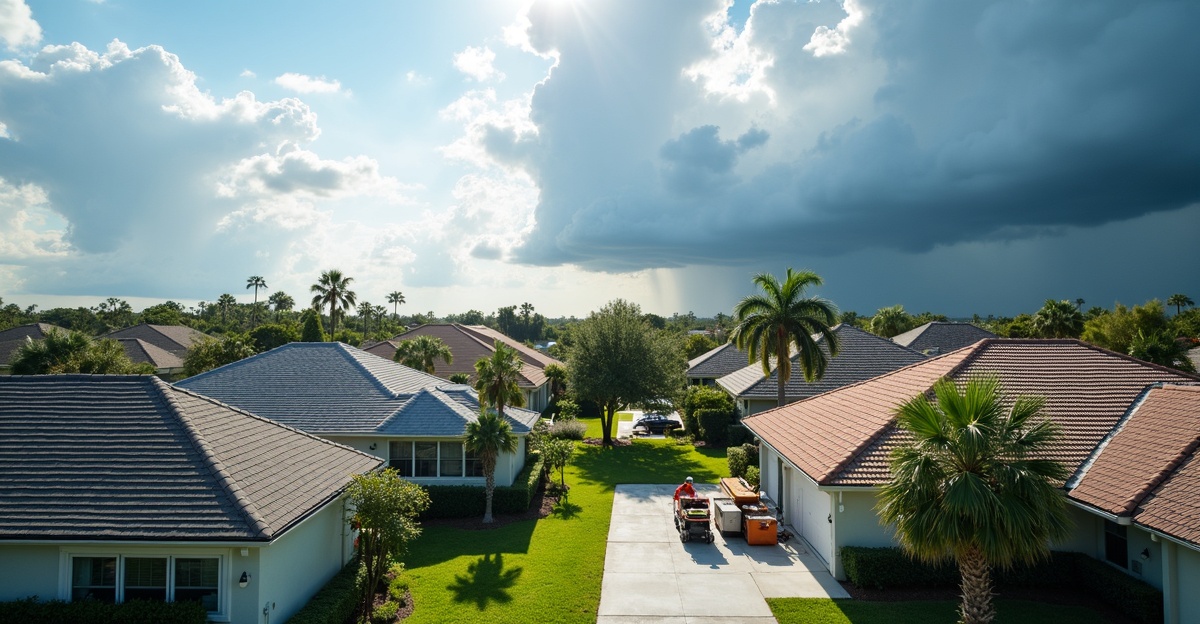
Timing plays a big role in roof replacement across Florida. Hurricanes, intense rain, and scorching summers push the ideal window to the drier, cooler stretch from late fall to early spring. That’s when materials perform at their best, crews work more efficiently, and weather-related disruptions stay low.
Key Takeaways
- Florida’s dry stretch runs from November through April. With lower humidity and light rainfall, this period gives us the most predictable conditions for roof installation.
- Fall and winter make scheduling easier. Crews work faster in cooler temperatures, and shingles seal more effectively without the strain of constant heat.
- Early spring remains a solid choice. But by May, heightened humidity and incoming storms begin to complicate projects and extend turnaround times.
- Summer brings daily storms, high heat, and hurricane threats. These conditions slow progress and raise safety concerns for both crews and homeowners.
- Planning several months ahead—especially before storm season—reduces the risk of emergency fixes and keeps your project on budget and on schedule.
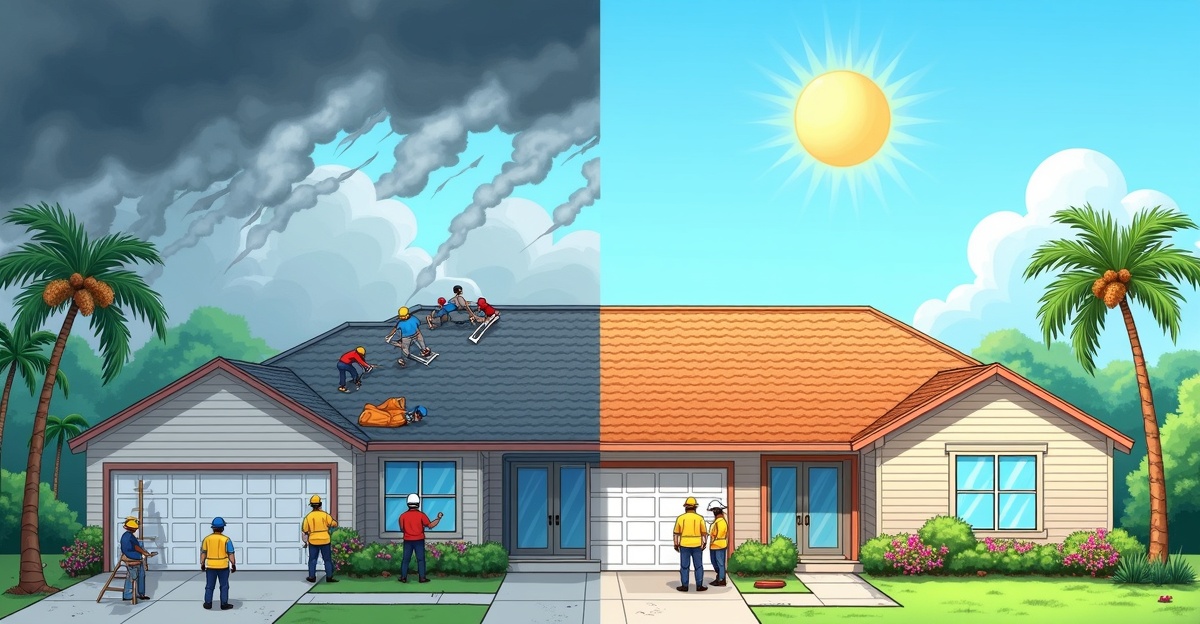
Understanding Florida’s Climate for Roof Replacement
Florida’s weather runs on its own schedule. From intense summer heat to hurricanes and heavy rains, timing roof work right takes planning—and local know-how.
Seasonal Weather Patterns in Florida
To choose the best time for a roof replacement, we need to understand Florida’s unique climate. In most parts of the state, especially Central and North Florida, seasons are defined less by temperature and more by rain and storm frequency.
Florida’s rainy season runs from May through October, peaking between June and September. This period sees heavy afternoon thunderstorms, high humidity, and an increased chance of hurricanes. Any roof work during these months can face delays, water damage risk, and limited crew availability due to storm response efforts.
November through April is Florida’s dry season. Temperatures are cooler, humidity is lower, and rain is infrequent. That stretch—especially late fall through early spring—is generally considered the best time for roof installation or replacement. Weather stays stable, and crews can work more efficiently, meaning faster completion times.
Key Considerations by Season
- Fall (October–November):
This is one of the most favorable times to replace a roof in Florida. Hurricane season is winding down, rains become lighter, and temperatures start to cool. Crews work longer hours comfortably, and materials like asphalt shingles seal properly under moderate warmth. - Winter (December–February):
Cooler and dry conditions make winter a strong contender. There’s lower risk of storms and demand often dips a little after the holidays. Homeowners planning ahead can schedule jobs with wider availability and possibly quicker turnaround. - Spring (March–April):
Still part of the dry season, spring offers ideal conditions especially early on. Temperatures warm up but remain manageable, and roofing materials cure well with consistent sun exposure. By May, clouds start to roll in more often. - Summer (May–September):
Installation during summer is possible—our crews work year-round—but it comes with hurdles. These months are packed with afternoon thunderstorms, high UV exposure, and hurricane threats. Jobs can be interrupted or delayed by weather events. However, if we’re dealing with damage from a storm or aging roof issues, summer roofing may not be avoidable. In those cases, reacting quickly helps minimize further problems. Some residents also try to time roofing work ahead of storm season to reinforce their homes.
If you’re unsure whether it’s time to move forward, these signs your roof needs replacement might help us make the call together.
Planning for Seasonal Challenges
Choosing the right season is only part of the equation. Here’s how we help plan around climate-related concerns to ensure a smooth project:
- We monitor weather forecasts closely, especially during fringe months like May and October.
- In hurricane season, we suggest scheduling early and securing priority status before mid-summer.
- For older homes or roofs nearing their lifespan, we may recommend action before peak storm threats. Learn more in our guide on how long shingle roofs last in Florida.
- For urgent repairs caused by storms or fallen branches, our storm damage repair team steps in quickly to inspect, document, and protect your home.
Crews work more efficiently in dry and mild weather—not just for comfort, but safety too. Fewer weather-related delays mean fewer disruptions and less chance of water intrusion while old roofing is stripped.
If repairs are still a viable option, we’ll guide you. Visit our post on whether a roof can be repaired instead of replaced to explore the possibilities. When replacement is the right move, we handle all the prep to protect your property from debris or sudden weather changes.
Ready to move forward? We offer roof replacement services with a focus on quality materials, efficient timelines, and clear communication. Whether you’re making a proactive choice or responding to roof damage, timing your project with Florida’s climate makes for safer, smoother results.
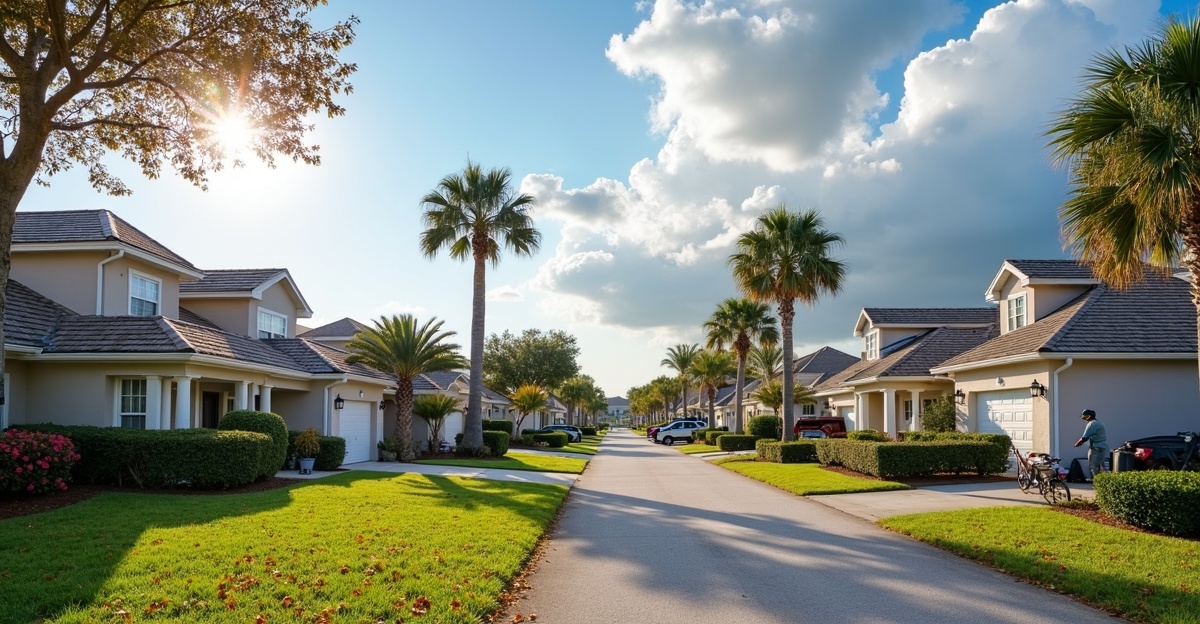
Seasonal Considerations for Roof Replacement in Florida
How Florida’s Climate Affects Roofing Schedules
Florida weather plays a big role in determining the ideal time for a roof replacement. With hot summers, a long rainy season, and the potential threat of hurricanes, timing becomes everything. Planning ahead can help us avoid delays, skip storm-related risks, and make sure materials set and seal properly.
The dry season — typically from late fall through early spring — is the most reliable window for replacing a roof. That’s roughly November through March. During these months, Florida tends to see lower humidity, milder temperatures, and fewer weather interruptions. Shingles and other roofing materials cure better without excess moisture or extreme heat, giving our projects a longer-lasting finish.
Summers here can be brutal. The heat not only makes working conditions tougher but can also affect how certain materials perform during installation. That said, we do still replace roofs in summer — we just plan more carefully. Rainstorms typically roll in during the afternoon, so we schedule work earlier in the day when possible.
Hurricane season, which runs from June through November, presents bigger challenges. We always keep an eye on forecasts and plan buffer days for weather delays. If you’re working with us during that timeframe, we’ll talk through any special precautions to keep your home protected throughout the process.
Peak vs. Off-Peak Roofing Seasons
Understanding the rhythm of the industry can help you choose a time that aligns with your budget and your schedule. Here’s what to expect between peak and off-peak roofing seasons:
Peak Season (Spring to Mid-Summer):
- This is when the demand for roofing work typically surges.
- Homes damaged during hurricane season the year before are often scheduled for replacement around this time.
- The weather is more favorable than in late summer and early fall, so schedules book quickly.
Off-Peak Season (Late Fall to Winter):
- Work tends to slow down as the end of the year approaches.
- This can be a great time to consider a roof replacement in Florida.
- Faster turnaround times, reduced waitlists, and more personalized attention are common.
- You’ll also skip over the summer storm challenges.
If you’re unsure whether to take on a full replacement or just need a few repairs first, it helps to understand the warning signs. Check out these common signs your roof needs replacement so you can catch issues early before they turn costly.
For homeowners managing tight schedules or trying to work around family travel and holidays, we help build project timelines that minimize disruption. Planning a roof replacement doesn’t have to pause your routine.
Here’s a quick comparison to help weigh peak versus off-peak timing:
- Peak (March–June):
- More predictable weather.
- High demand means longer wait times.
- Ideal for urgent replacements before hurricane season.
- Off-Peak (November–February):
- Easier to schedule work quickly.
- Cooler weather benefits materials and crew safety.
- Could lead to cost savings depending on market trends.
If you’re dealing with storm damage or leaks and can’t delay, immediate repairs might be the smarter move. In many situations, a roof can be repaired instead of replaced, giving you a bridge until the weather is better for a full install.
We serve plenty of homeowners looking for roofing in Palm Coast and surrounding communities who want to get ahead of the rainy season. Whether you’re looking for quick repairs, new installation, or a full upgrade, timing it right will save you stress down the road.
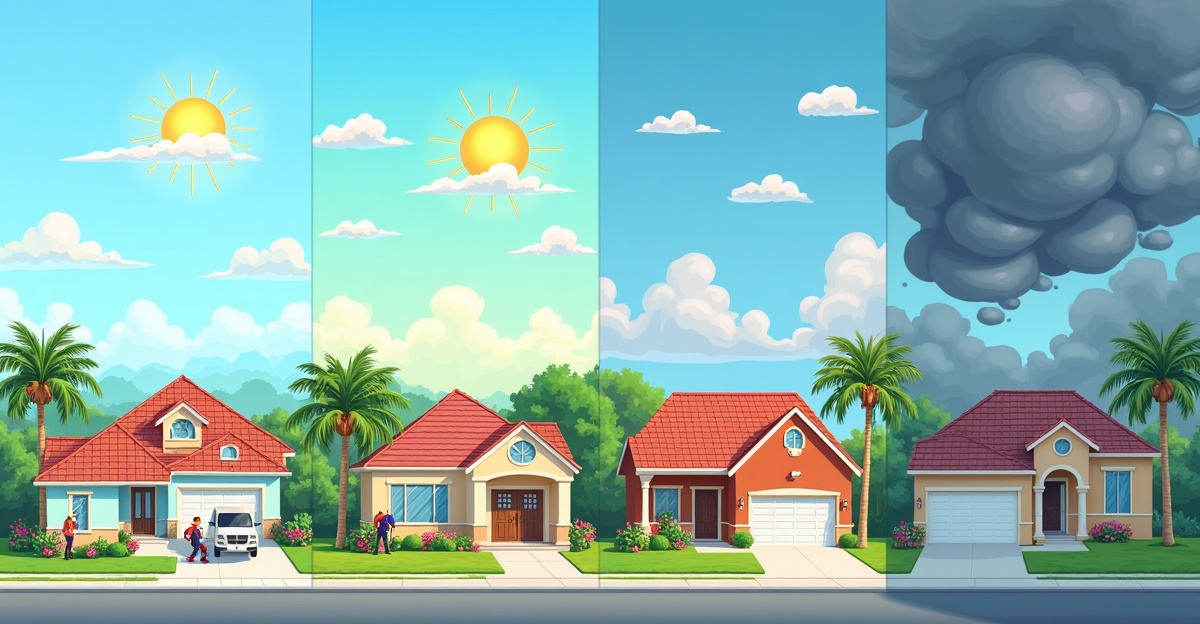
Impact of Florida Weather on Roof Replacement Timing
Understanding Florida’s Weather Patterns
We see firsthand how Florida’s weather can make or break the timing of a roof replacement. With long sweltering summers and a rainy season that stretches from May through October, choosing the right month matters. Add hurricane season into the mix—from June through November—and you’ve got a narrow window for safe roofing work that doesn’t risk delays or damage.
Generally, the driest and most reliable months are from late November through early April. During this time, we benefit from lower humidity, fewer pop-up storms, and calmer winds. That makes it easier for our crew to work safely and efficiently, and faster for roofing materials—especially adhesives and sealants—to cure properly.
How Seasonal Changes Affect Roofing Projects
Timing a roof replacement well means planning around Florida’s seasonal quirks. Here’s how each time of year stacks up:
- Winter (December–February): Often the most dependable season. Cooler temps and low rainfall give us steady conditions for roof replacements. Material curing is more predictable, and there’s less chance of sudden weather interruptions.
- Spring (March–May): Still manageable, especially early spring. As we near May, rain chances rise and intense heat starts to build, which can affect material handling and increase job-site fatigue.
- Summer (June–August): Not ideal. Afternoons often bring thunderstorms, and the intense sun and heat make for tough, slow working conditions. Hurricanes and tropical storms also pose threats. If summer is our only option, we plan early morning starts and include buffer days.
- Fall (September–November): Early fall remains risky due to hurricanes. By mid-November, however, things usually calm down, making it a promising time if winter scheduling fills up.
We always monitor local forecasts closely to avoid delays or damage. Planning a project in Florida doesn’t just depend on average weather patterns—it depends on the real-time behavior of storm systems, humidity levels, and temperature highs that can all shift quickly.
When urgency wins out over perfect timing—like in the wake of storm damage—we act fast. Our team is trained to handle unexpected repairs and complete clean-ups with safety as the top priority. For more on how hurricanes affect roofs, especially shingle systems, see this guide on how hurricanes damage shingle roofs.
If you’re unsure whether your roof can hold out until the ideal season, we recommend checking for key signs your roof needs replacement. Addressing issues early helps avoid emergency replacements in risky weather windows.
Some repairs may buy you time. If that’s an option, we’ll say so. Learn more about whether a roof can be repaired instead of replaced based on your current condition.
We replace and install roofs year-round, but the success of each project comes down to a mix of timing, preparation, and adaptability. If your roof’s showing signs of failure, don’t wait for the perfect month—start with an evaluation. Our roof replacement service includes a full inspection and honest advice on whether you can wait or need to act.

Signs It’s Time for a Roof Replacement in Florida
Visual Red Flags to Watch For
Age isn’t the only clue your roof might be ready for retirement. Florida’s high humidity, salt air, and hurricane seasons age roofing materials faster than many homeowners expect. Some signs are hard to miss, while others require a closer look or a quick inspection from our professionals.
Keep an eye out for these clear indicators that your roof may need replacing:
- Shingles that curl, crack, or are completely missing
- Granules collecting in gutters or around downspouts
- Sagging rooflines, especially around valleys or ridges
- Visible light coming through attic boards
- Water stains or repeated leaks inside your ceiling
- Moss or algae buildup, which can trap moisture and worsen decay
Storms also accelerate roof damage. If you live in coastal areas like Palm Coast and experience regular tropical systems, damage can happen faster. Be mindful of high winds and flying debris, especially after strong weather events. You can learn more by checking out what to expect from hurricane damage to shingle roofs.
How to Tell Repair Isn’t Enough
Sometimes problems are isolated and fixable. Other times, patchwork won’t stretch much longer. If your roof is 15 to 20 years or older, even small fixes can become frequent and costly. Many of our customers ask, can a roof be repaired instead of replaced?—and the answer comes down to long-term function and safety.
Here’s when full replacement usually makes more sense:
- Repairs are needed in multiple areas
- Interior water damage has become persistent
- The structural deck has begun rotting or shifting
- Energy bills are climbing from poor insulation or air leaks
- You’ve had repeated leaks even after repairs
We always aim to preserve what we can, but when the structure is compromised or repairs only offer short-term relief, a new roof provides better protection and peace of mind. If you’re unsure, read more about the signs your roof needs replacement and reach out if you need an honest inspection.
Our roof replacement services are built around Florida’s unique climate challenges. We’ll help you weigh your options and make a decision that fits your budget without shortcuts.
Need help estimating replacement cost? We’ve broken down what impacts the budget in our guide on roof repair costs in Florida—a helpful starting point whether you’re considering repair or full replacement.
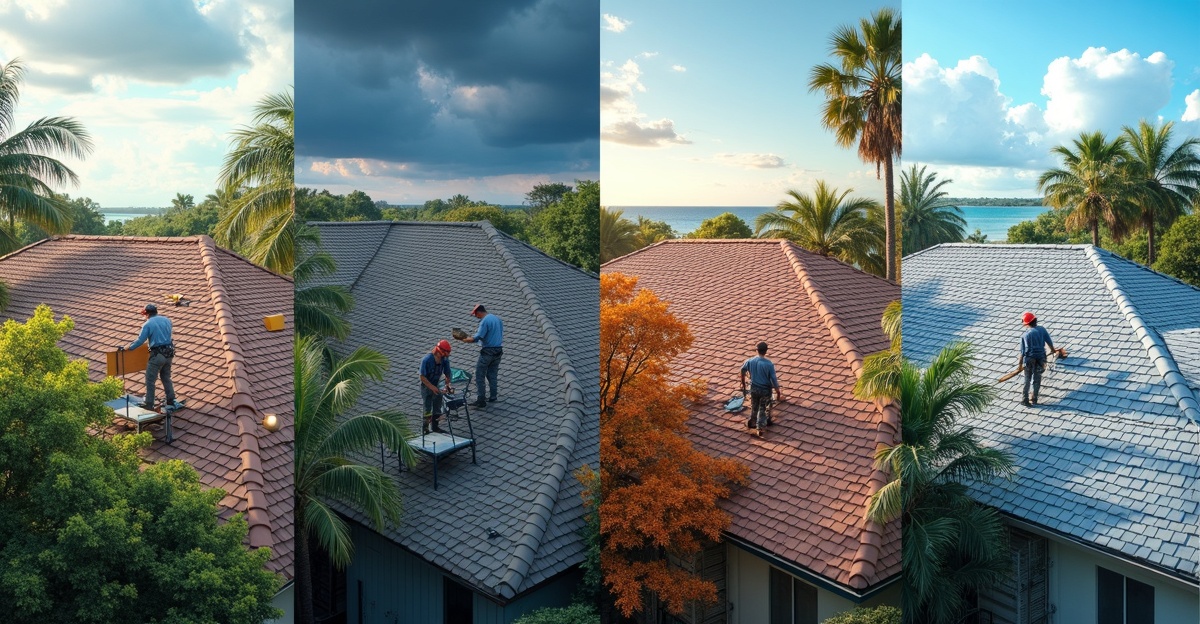
Florida’s Seasonal Weather and Its Effect on Roofing Projects
Florida’s weather shifts quickly, and that has a big impact on roof replacement work. From dry winters to stormy summers, knowing how each season affects installation efficiency helps us choose the ideal time to reroof.
Season-by-Season Breakdown for Roof Replacement
Here’s a closer look at how Florida’s seasonal patterns influence roofing timelines and project outcomes:
- Spring (March to May)
Spring brings moderate temperatures with lower humidity, making it a strong choice for roof work. There’s occasional rain, but it’s far less frequent than in summer. Shingle adhesives also set well in these conditions. This is usually a safer bet before the hurricane season kicks off in June.
- Summer (June to August)
Summer is the peak of Florida’s rainy season and the start of hurricane threats. Afternoon thunderstorms are nearly daily, and excessive humidity can delay installations. We recommend avoiding roofing projects during this time unless it’s an urgent need. If a leak or storm damage puts your home at risk, emergency roof repair may be the only option.
- Fall (September to November)
Early fall can still be risky due to lingering hurricanes, but by late October, rain levels drop. Cooler weather returns, which is better for both crews and materials. This season tends to be a popular time for roof replacements, especially for homeowners who want peace of mind before winter.
- Winter (December to February)
Florida winters are generally dry, cool, and stable, making this one of the most reliable times to schedule roof work. Roofers aren’t battling storms or sweltering sun, and homeowners benefit from quicker turnaround times and sometimes more flexible scheduling.
Timing a project before major weather events can save us from bigger headaches. For homes with aging shingles or recurring leaks, now might be a good time to check for the common signs you need a new roof. Acting early can prevent costly water damage down the road.
In a coastal state like ours, tropical weather can’t always be predicted. Even with good planning, Florida storms might delay work. That’s why choosing an experienced team that knows how hurricanes can impact shingle roofs makes such a big difference. We’re here to help guide that timing based on your location and your roof’s unique condition.
If you’re not sure whether repair can extend the life of your roof a few more years, or if replacement is the smarter call, we’ll do a full assessment. Sometimes, as explained in our post about roof repair versus replacement, the decision comes down to age, material, and whether patching it up will hold long-term.
Making the most of Florida’s winter or spring weather can reduce the risk of delays and make the job smoother all around. If you’re in Volusia, Flagler, or nearby, our Daytona Beach roofing crew is ready to help you get it done while conditions are at their best.
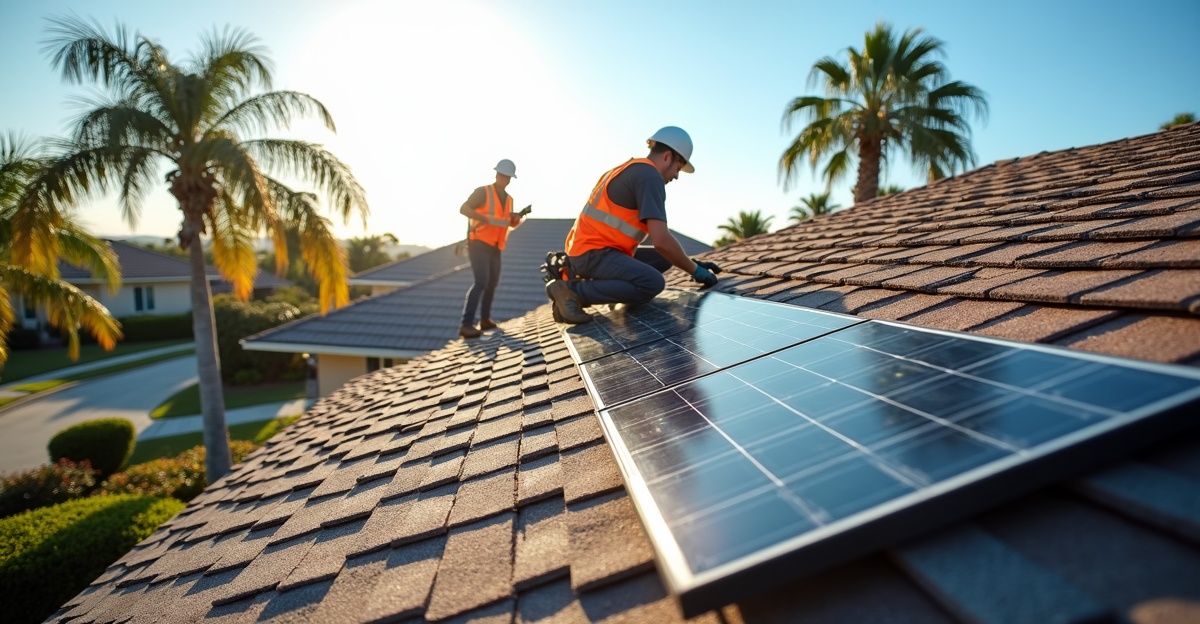
Benefits of Replacing Your Roof at the Right Time
Replacing a roof before it fails completely can prevent costly damage and make the most of your investment. Timing it right isn’t just about convenience—it impacts everything from your home’s protection to your energy bills and property value.
Why Good Timing Matters
Choosing the right season or lifecycle stage to tackle a roof replacement pays off in several ways. Here’s what we see as the biggest advantages:
- Better Weather, Better Work: Florida’s dry, cooler months—typically late fall through early spring—offer ideal working conditions. Materials seal better in moderate temperatures, and there’s less chance of rain disrupting the process or damaging your home during construction.
- Contractor Availability: Scheduling outside of hurricane season or peak summer can mean quicker turnaround times. Roofers are often booked solid in June through August or right after major storms. Acting early means more attention and fewer delays.
- Improved Home Protection: If your current roof is showing damage like sagging, curling shingles, or leaks, waiting increases the risk to your interior and foundation. Replacing it early avoids emergency repair costs and preserves your home’s integrity.
- Energy Efficiency Boost: Florida sun can push utility costs through the roof—literally. Installing a new roof with modern materials improves insulation and reduces cooling costs, especially during those long, hot months.
- Lower Long-Term Costs: A timely replacement prevents recurring roof repair jobs. Addressing the entire system, rather than patching, avoids a cycle of temporary fixes that really add up over time.
In hurricane-prone areas, this strategic timing can be even more crucial. With storms hitting hardest between June and November, it’s wise to inspect your roof and make decisions before summer arrives. For insights into Florida’s weather impact on shingles, we’ve broken that down in how hurricanes damage shingle roofs.
Replacing a roof isn’t just about age. Signs like frequent leaks, daylight through attic boards, or missing shingles often mean the system’s near the end of its lifespan. Not sure what to look for? Visit our guide on signs your roof needs replacement in Florida to learn more.
Some homeowners ask if fixing a roof could buy more time. That’s an option in the right situation. Our experts offer advice on whether a roof can be repaired instead of replaced, helping weigh the costs and long-term outlook of either choice.
If it’s time to act, our roof replacement services provide experienced, reliable help. We install high-quality systems backed by skilled crews and transparent planning. And if you’re in Flagler or Volusia County, we’re proud to serve in your backyard, from Palm Coast to Daytona Beach.
Whether your roof is ten years in or hanging on past due, replacing it at the right time brings peace of mind—and real benefits.

